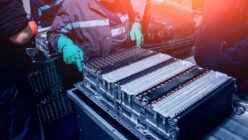Okay, here’s the dirt under the rug. Skeptics and pessimists knew it all along that PV (Photovoltaic) modules or Solar Panels could not possibly be all that perfect and simple.
Even the most elegant technology is never quite perfect. There are a few things to watch out for like wattage ratings on PV modules that are given under ideal laboratory conditions at room temperatures.

There are three factors that directly affect module performance out in the real world: availability of full sun, shadows, and temperature.
Availability of full Sun.
As previously mentioned in the Efficiency section, most of us seldom see 100% of full sun conditions.
If you are not getting a full, bright, shadow-free sun, then your PV output will be reduced. If you are not getting bright enough sun to cast fairly sharp-edged shadows, then you do not have enough sun to harvest much useful electricity. 80% to 85% of “full sun” (defined as 1000 watts per square meter) is what most of us get on a clear sunny day. High altitude and desert locations will do better.
Shadows – Buildings, structures, trees, etc.
Even a tiny amount of shading dramatically affects module output. Electron flow is like water flow. It flows from high voltage to low voltage. Normally the module is high and the battery or load is lower.
A shaded portion of the module drops to very low voltage. Electrons from other portions of the module and even from other modules in the array will find it easier to flow into the low-voltage shaded area than into the battery. These electrons are then lost.
Temperature – Too hot modules will generate less.
The current output from all module types fades somewhat at higher temperatures. This is not a serious consideration until ambient temperatures climb above 80°F (above 26°C), but that’s not uncommon in full sun.
The backs of modules should be as well-ventilated as possible. On the positive side of this same issue, all modules increase output at lower temperatures, as in the wintertime, when most residential applications can use a boost.
We have seen many cases when the modules were producing 30% to 40% over specs on a clear, cold winter morning with a fresh reflective snow cover and hungry batteries. What this all boils down to is this – derate module output by 15% as a general rule of thumb.
If you are designing a panel-direct system (where the modules are connected directly to the pump or fan without charge controllers or batteries), derate by 20%, or by 30% for direct applications in a warm summer climate.






Leave a Reply